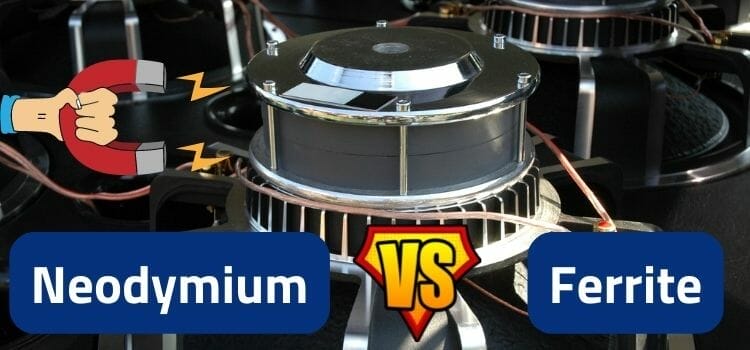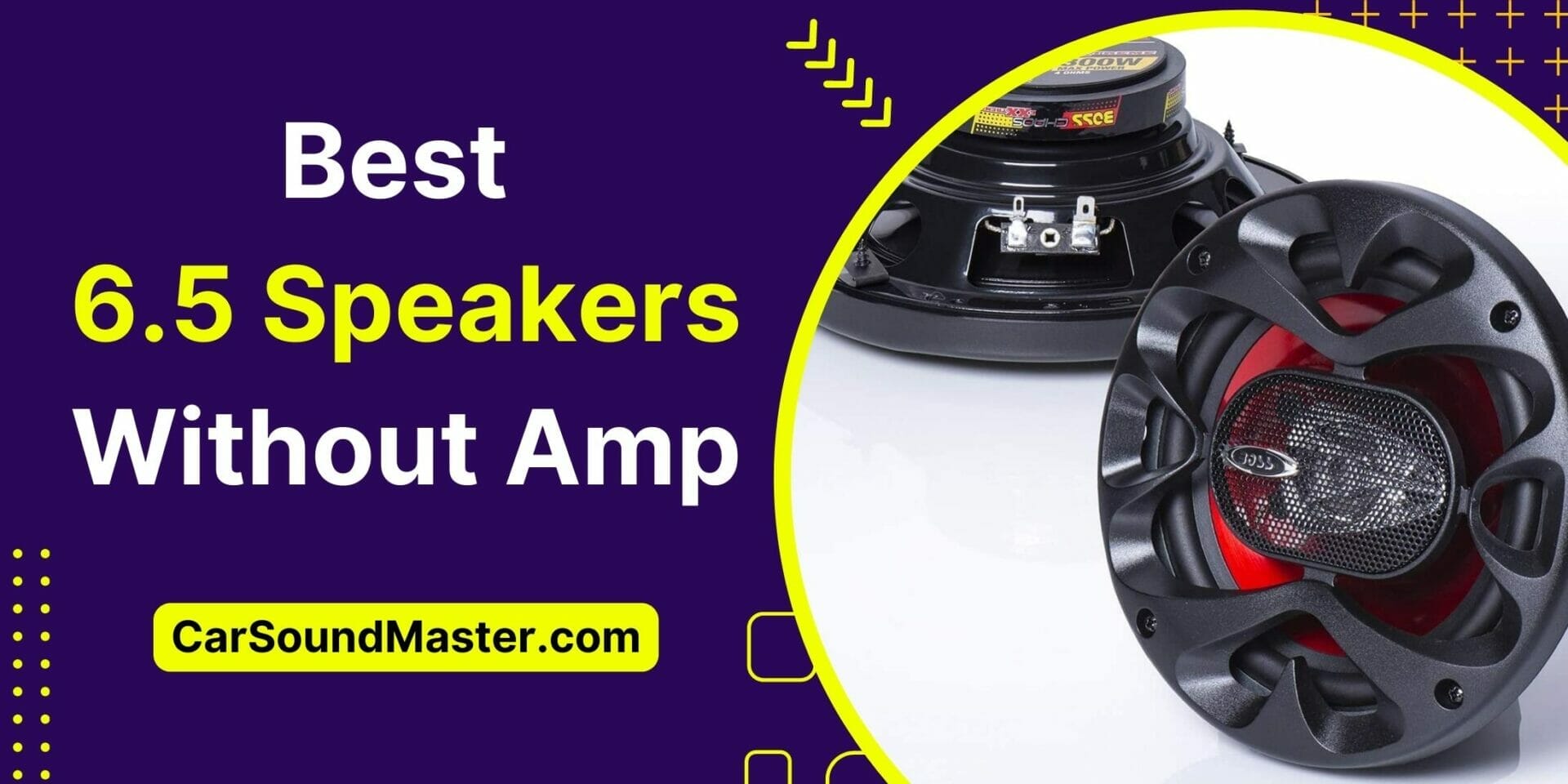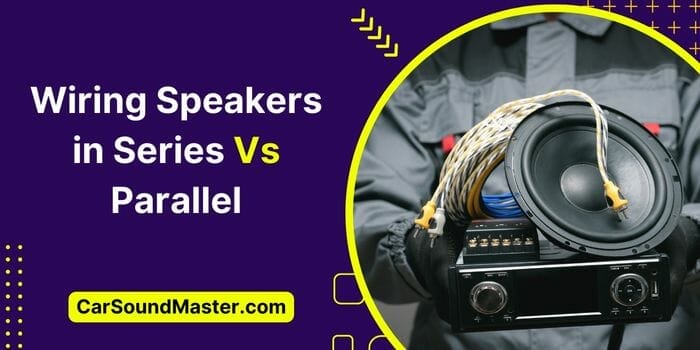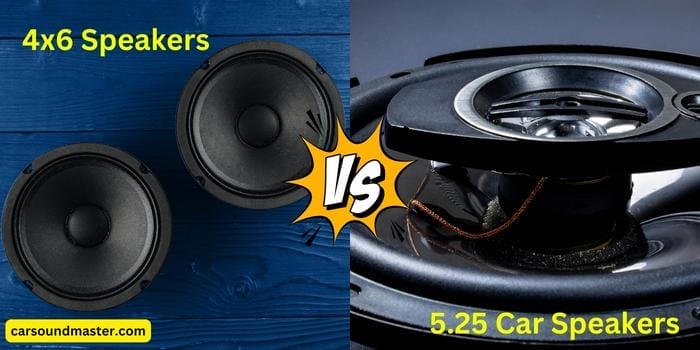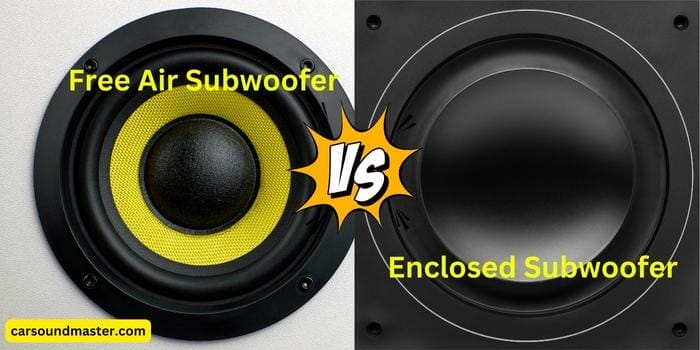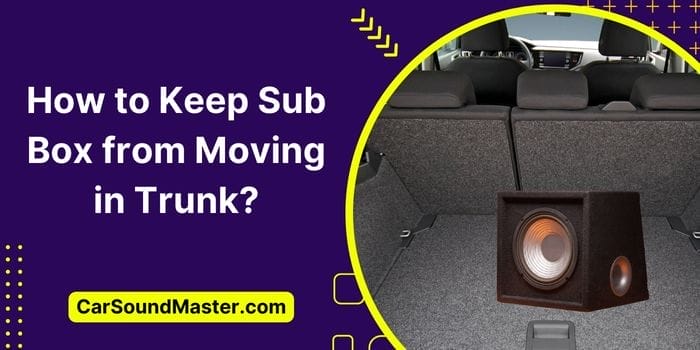Neodymium Vs Ferrite Magnets – For Speakers and Subwoofers?
In the realm of car stereo systems, we find ourselves surrounded by an unprecedented array of choices.
The ever-evolving landscape of audio manufacturing, fueled by innovative designs and techniques, now allows car audio systems to redefine the boundaries of performance and sound quality.
As you embark on the journey of enhancing your car stereo system, the multitude of choices can be both perplexing and frustrating.
In this article, we delve into one of the most common queries surrounding subwoofers: the age-old debate of ferrite versus neodymium speakers.
Here, we aim to provide a comprehensive discussion to empower you in making an informed decision for your car stereo system.
Additionally, we’ll explore the pros and cons of each magnet type to guide you through the selection process.
Neodymium Vs Ferrite Magnets
As promised, this blog meticulously breaks down each magnet type, offering a detailed examination of their pros and cons.
By the end, you’ll have a clearer understanding of which magnet type suits your car speakers and subwoofers best. Let’s dive into the comparison.
Now, let’s take a look at them one by one.
Let’s Discuss The Neodymium Magnet:
Comprising neodymium (Nd), iron (Fe), and boron (B), neodymium magnets stand as rare earth magnets with exceptional magnetic force. These magnets, when permanently magnetized, exhibit a higher magnetic force than traditional ferrite magnets.
Neodymium magnets, being lighter than ferrite, find favor in certain applications like component speakers and headphones.
Their lighter weight, coupled with increased force, makes neodymium a fantastic choice for subwoofer motors. Manufacturers leverage this advantage to create smaller, more powerful, and lightweight systems compared to their ferrite counterparts.
However, it’s essential to note the downsides of neodymium, such as its susceptibility to erosion and higher working temperature.
Chemical alterations and coatings are often required to enhance durability, adding to the overall cost of the speaker or subwoofer.
Now, Let’s Discuss The Ferrite Magnet:
For decades, ferrite magnets have been the go-to choice for speaker manufacturers. Comprising ferromagnetic metal oxide, ferrite magnets are considered non-permanent magnets with lower magnetic force.
Their resistive nature to corrosion and deterioration makes them ideal for manufacturing car audio speakers and subwoofers.
While heavier than neodymium, the weight of ferrite magnets can be advantageous.
For subwoofers, the added weight of the ferrite motor structure contributes stability, especially when the sub is operating near its limit. Cost-wise, ferrite is often more budget-friendly than its neodymium equivalent.
Neodymium Speakers vs Regular Speakers Sound Quality
Both neodymium and ferrite speakers and subwoofers can produce an equivalent overall sound signature. The ultimate sound quality is influenced by various factors like voice coil construction, speaker cone, and enclosure design.
Choosing between neodymium and ferrite should not solely rely on the type of magnet used; rather, consider the overall speaker design.
Overall Comparison Neodymium vs. Ferrite for Speakers
The ongoing debate in the audio industry regarding the usage of ferrite and neodymium magnets in audio speakers persists.
Manufacturers often boast about the superior sound offered by neodymium magnets in their promotional materials. However, audiophiles continue to appreciate speaker systems crafted with the tried-and-true ferrite magnet.
The choice between neodymium and ferrite depends on several factors, such as the speaker design, installation location (home or automobile), and whether the voice coil is optimized for the magnet type.
While neodymium might be favored for applications requiring a lot of power, both magnets can efficiently drive a compression driver.
Read here checking the blown subwoofer.
Frequently Asked Questions
These are the most asked questions asked by people:
Q. Why is neodymium used in speakers?
A. Neodymium magnets are commonly used in speakers due to their high magnetization and demagnetization capabilities.
The resulting deformation of the cone and increased electromagnetism contribute to enhanced sound production.
Q. Does neodymium break easily?
A. Yes, neodymium magnets can shatter and break if allowed to slam together.
Despite their appearance, these magnets are not as hard and are coated with shiny nickel plates. If subjected to impact, they can peel, chip, and crack.
Q. How long does a neodymium magnet last?
A. Neodymium magnets lose a fraction of their performance every 100 years. Being permanent magnets, their lifespan is long-lasting.
Q. How can I make my speakers warmer?
A. To achieve a warmer sound, focus on in-toeing help and tightening the soundstage. Ensure the speakers point at your ears, creating a hotter sound. Experiment with the tweeter level to find the sweet spot.
Conclusion
The detailed information provided in this article is intended for knowledge purposes.
When choosing speakers or subwoofers for your car stereo system, the decision should not hinge solely on whether the speaker or subwoofer features neodymium or ferrite magnets.
I’ve presented this information to shed light on the magnet structures of speakers, emphasizing that the choice ultimately boils down to personal preference.
I trust this blog has equipped you with valuable insights into the differences between neodymium and ferrite magnets.
Have a fantastic day!

